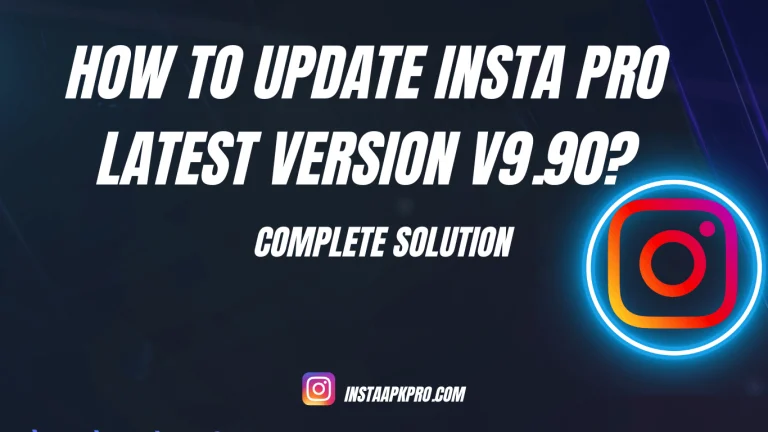5G Network: Faster, Smoother, and More Connected
5G networks represent the next evolution in mobile internet connectivity, promising lightning-fast speeds and rock-solid connections on our smartphones and various devices. This cutting-edge technology, combined with the latest high-spec devices, is poised to revolutionize our digital experience.
With average download speeds reaching around 1Gbps, 5G is set to become the new standard for next-generation networks, revolutionizing the way we experience digital platforms like Instagram.
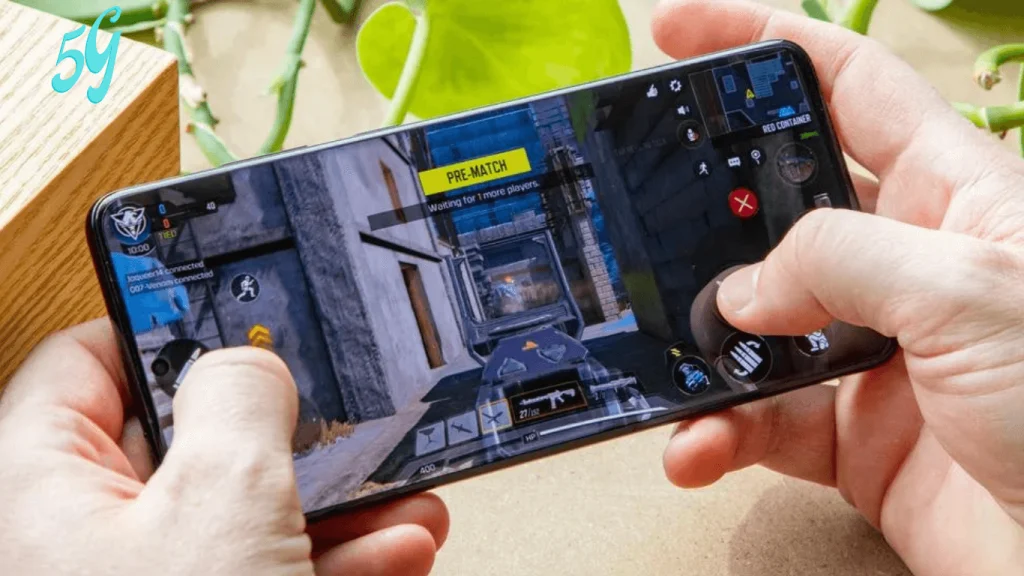
A Smarter, More Connected World
Beyond speed, 5G networks are expected to supercharge the Internet of Things (IoT) technology, creating the infrastructure necessary to transmit vast amounts of data. This, in turn, will enable a smarter and more connected world. Imagine a world where information from countless sensors provides real-time insights into your home, your town, or even your city.
Global Rollout and Expansion
5G networks have already launched worldwide, with providers offering this cutting-edge technology in the US, UK, Australia, and various other countries. While the rollout schedules faced setbacks due to the COVID-19 pandemic, networks are steadily expanding. Carriers remain committed to extending their current setups and deploying nodes in new areas and cities.
Seamless Integration with Existing Networks
Many of these 5G networks seamlessly integrate with existing 3G and 4G technology, ensuring speedier connections that stay online, regardless of your location. You might already have access to 5G in your area, and we’ll provide more details below about what 5G is and how it can benefit you.
5G Availability
Before we dive deeper into the world of 5G, it’s essential to understand that even if you have a 5G phone and a 5G-ready plan, immediate access to next-gen connectivity may be limited. Coverage areas are still expanding in the US, UK, and Australia.
5G Network in the US
In the United States, the four major carriers now offer 5G connectivity, but the availability of signals remains somewhat limited. Nevertheless, coverage is expanding month by month as carriers continue to invest in their 5G infrastructure.
Verizon’s 5G
Verizon made waves by launching its 5G Home network in late 2018, followed by the introduction of its 5G mobile network in April 2019, making it the first global provider to offer this next-generation network.
By the end of 2019, Verizon’s 5G network had gone live in parts of 31 cities, starting with Chicago and expanding to major cities like Los Angeles, New York City, Atlanta, and Dallas. It also reached smaller cities like Memphis, Columbus, and Grand Rapids.
As of June 2020, Verizon’s 5G is available in 35 locations, including recent additions like Little Rock, AR, Kansas City, MO, Cincinnati, OH, and San Diego. The carrier is committed to further expansion throughout 2020.
In Chicago, we achieved remarkable speeds of up to 1.4Gbps, a significant leap from 4G’s theoretical top speed of 300Mbps (with average 4G speeds often below 100Mbps). However, it’s worth noting that Verizon’s 5G coverage is currently patchy due to its use of ultra-high-speed but low-coverage mmWave technology in the 28GHz and 39GHz spectrums. This means it’s primarily available in specific neighborhoods and areas within cities, at least for now.
While we did experience occasional patchiness, we consistently achieved speeds around 1Gbps. These speeds are expected to improve, along with expanding coverage areas. You can check Verizon’s coverage maps to see which parts of your city offer 5G connectivity.
5G in the United States
When it comes to 5G in the United States, each major carrier has adopted its unique approach.
Verizon’s 5G
Verizon made headlines by launching its 5G Home network in late 2018, followed by the introduction of its 5G mobile network in April 2019, making it the first global provider to offer this next-generation network.
By the end of 2019, Verizon’s 5G network had gone live in parts of 31 cities, starting with Chicago and expanding to major cities like Los Angeles, New York City, Atlanta, and Dallas. It also reached smaller cities like Memphis, Columbus, and Grand Rapids.
As of June 2020, Verizon’s 5G is available in 35 locations, including recent additions like Little Rock, AR, Kansas City, MO, Cincinnati, OH, and San Diego. The carrier is committed to further expansion throughout 2020.
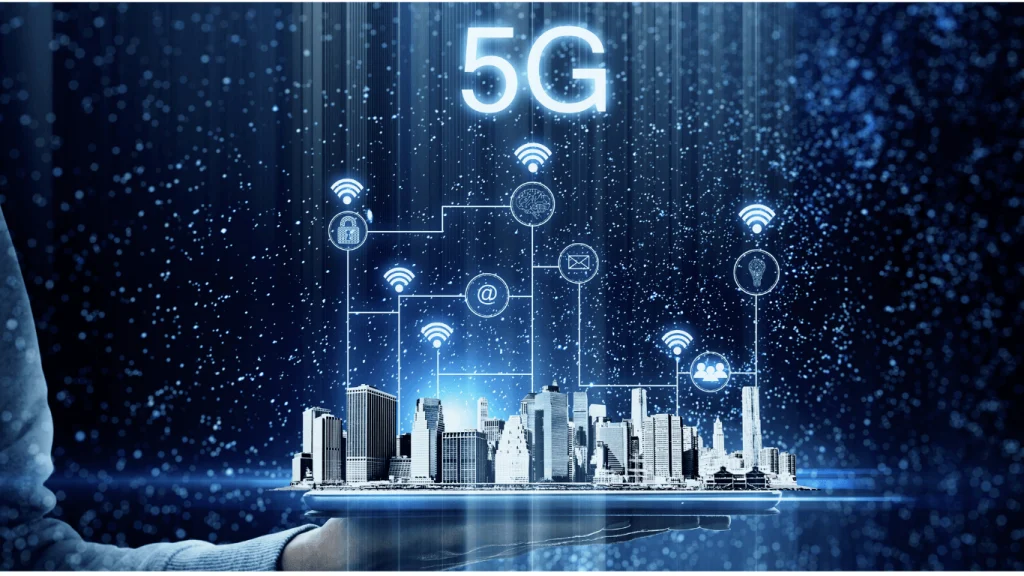
In Chicago, we achieved remarkable speeds of up to 1.4Gbps, a significant leap from 4G’s theoretical top speed of 300Mbps (with average 4G speeds often below 100Mbps). However, it’s worth noting that Verizon’s 5G coverage is currently patchy due to its use of ultra-high-speed but low-coverage mmWave technology in the 28GHz and 39GHz spectrums. This means it’s primarily available in specific neighborhoods and areas within cities, at least for now.
While we did experience occasional patchiness, we consistently achieved speeds around 1Gbps. These speeds are expected to improve, along with expanding coverage areas. You can check Verizon’s coverage maps to see which parts of your city offer 5G connectivity.
T-Mobile’s Approach
T-Mobile, on the other hand, adopted a different strategy. In 2019, the company focused on negotiations to merge with rival telecom Sprint. T-Mobile’s 5G network utilizes both 28GHz mmWave frequencies and sub-600MHz frequencies. The latter extends coverage to suburban and rural communities but offers lower speeds.
T-Mobile launched its mmWave coverage in New York City, Los Angeles, Dallas, and Las Vegas in June 2019, with plans to reach 30 cities by the end of the year. At that time, the Samsung Galaxy S10 5G was the only phone compatible with T-Mobile’s 5G network.
In December 2019, T-Mobile staged a nationwide 5G launch event using the lower 600MHz frequencies, providing coverage across 1 million square miles and reaching 60% of Americans. By June 2020, T-Mobile’s 5G smartphone lineup had expanded to include devices like the Samsung Galaxy S20 series, LG V60 ThinQ, and OnePlus 8 5G.
T-Mobile continued its expansion efforts throughout 2020, partnering with regional carriers and gaining access to Sprint 5G as part of their merger, bringing T-Mobile 5G to all 50 states. However, it’s important to note that while T-Mobile’s coverage has grown, speeds and coverage area may not be uniform everywhere.
Sprint’s Mid-Band Approach
Sprint opted for a middle-of-the-road frequency approach, using the ‘mid-band’ 2.5GHz spectrum. This choice complements T-Mobile’s high and low-frequency bands.
Sprint’s 5G network initially went live in Chicago, Atlanta, Dallas-Fort Worth, and Kansas City in May 2019. It expanded to New York City, Washington D.C., Phoenix, and Los Angeles in August 2019 and later extended to Houston and other cities. Sprint’s lineup of 5G-compatible devices includes various Samsung Galaxy models, LG V50 ThinQ, and the US-exclusive OnePlus 7T 5G, along with the HTC 5G Hub, which is a 5G hotspot and not a phone.
Since the merger with T-Mobile, Sprint customers have been gaining access to T-Mobile’s 5G network, further expanding coverage. The eventual plan is to fully integrate both carrier networks and branding under a unified “New T-Mobile” banner, although the timeline for this formalization remains uncertain.
AT&T’s Limited 5G Investment
AT&T had a more limited investment in 5G, with a late 2018 launch followed by expansion to several cities, including Austin, Los Angeles, San Francisco, and Orlando in April 2019. However, AT&T initially lacked 5G phones and relied on the 5G Netgear Nighthawk mobile hotspot for service.
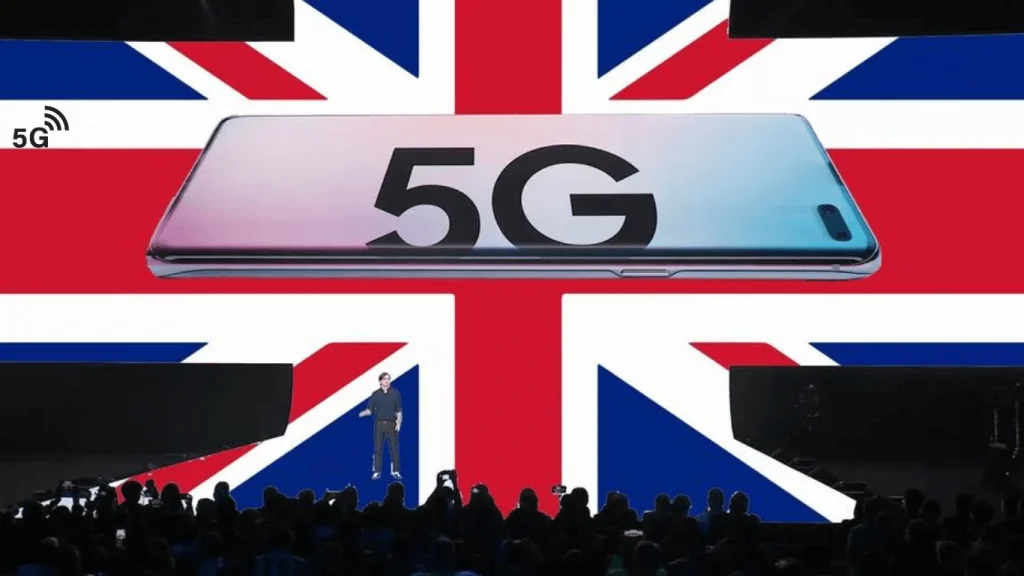
While AT&T claimed to offer ‘5Ge’ or 5G Evolution, a souped-up 4G service, this claim was widely criticized in the tech and telecom industry. Nevertheless, AT&T’s 5G coverage has improved, now including 5G-capable devices such as the Samsung Galaxy S20 series and the LG V60 ThinQ. The network offers true 5G in 190 “markets” across the US, with coverage varying by location. You can check AT&T’s latest list to see if it’s available in your area.
5G in the UK
In the United Kingdom, 5G networks have made significant strides, reaching cities and towns but not yet blanketing the entire country.
EE’s Early Launch
EE became the first UK carrier to launch its 5G network on May 30, 2019, initially in six cities. By the end of 2019, EE had expanded 5G to 50 towns and cities across the UK, including London, Edinburgh, Birmingham, and Manchester. As of October 2020, EE’s 5G coverage spans 112 towns and cities. While EE promised speeds of up to 1Gbps, we typically observed speeds in the 200-400Mbps range.
EE offers a range of 5G devices, from budget-friendly options like the Oppo Reno 5G to premium models like the Samsung Galaxy S20 Ultra 5G and the Samsung Galaxy Fold 5G.
Vodafone’s Entry
Vodafone introduced its 5G service on July 3, 2019, in seven cities and later expanded to eight more towns and cities on July 17. By the end of 2019, Vodafone’s 5G network had reached 31 cities and towns, including London, Glasgow, Birmingham, and Cardiff. As of October 2020, Vodafone offers 5G in 54 locations.
Vodafone also provides 5G roaming in select locations, setting it apart from other UK networks. The carrier offers seven 5G smartphones, including the Samsung Galaxy S20 5G, S20 Plus 5G, Xiaomi Mi Mix 3 5G, Samsung Galaxy A90 5G, Samsung Galaxy S10 5G, Samsung Galaxy Note 10 Plus 5G, and the Huawei Mate 20 X 5G.
Three’s Unique Launch
Three launched its 5G service in London on August 19, initially focusing on home broadband. The carrier delayed its mobile 5G rollout from late 2019 to early 2020 to ensure comprehensive network development. However, Three’s 5G network has since launched, covering parts of 68 locations as of October 2020. Three includes 5G as standard on all its plans, which sets it apart from other carriers.
O2’s 5G Expansion
O2 rolled out its 5G service in October 2019 in London, Cardiff, Edinburgh, Belfast, Leeds, and Slough. The carrier aimed to expand 5G to 14 additional cities by the end of the year, including Bristol, Eton, Leicester, Nottingham, and Windsor. As of October 2020, O2 offers 5G in 75 locations across the UK.
O2 provides twelve 5G devices, including the Samsung Galaxy S10 5G, Galaxy Note 10 Plus 5G, Galaxy A90 5G, Galaxy S20 5G series, Xiaomi Mi Mix 3 5G, Huawei Mate 20 X 5G, and the Oppo Reno 5G.
Other UK Networks
Several other UK networks have also joined the 5G race. Sky Mobile launched in early 2020, using O2’s infrastructure to match its coverage. Tesco Mobile activated its 5G network in March 2020, offering coverage in the same locations as O2. VOXI, launched in October 2019, provides 5G coverage in tandem with Vodafone.
BT, as an MVNO, launched its 5G service in October 2019, utilizing EE’s 5G network. BT’s 5G phone lineup includes models like the Samsung Galaxy S20 range, Samsung Galaxy S10 5G, Samsung Galaxy Note 10 5G, OnePlus 7 Pro 5G, Huawei Mate 20 X 5G, and Oppo Reno 5G. Since BT piggybacks on EE’s network, its coverage extends wherever EE’s network reaches.
The 5G Landscape in Australia
Australia has firmly established its presence in the realm of 5G networks, with Telstra and Optus leading the charge, and Vodafone making strides despite a slightly delayed entry.
As of mid-2021, Australia boasts some of the world’s fastest 5G speeds, outpacing both the US and UK. The median download speed in Australia approaches a remarkable 300Mbps, nearly double the global average.
Telstra and Optus are engaged in a heated competition, both vying for the title of the fastest 5G speeds in the country. While the two carriers offer comparable download and upload rates, Telstra has taken the lead in terms of national coverage. Consequently, the number of Telstra customers utilizing 5G technology is more than double that of Optus.
Nevertheless, the rollout of 5G continues, with coverage steadily expanding for both major telcos. For an in-depth and up-to-date map of 5G coverage across Australia, you can refer to Telstra’s dedicated 5G page as well as the Optus 5G page.
Available 5G Phones
The availability of 5G phones varies depending on your location and carrier. Here’s a glimpse of some 5G phones available in the US, UK, and Australia:
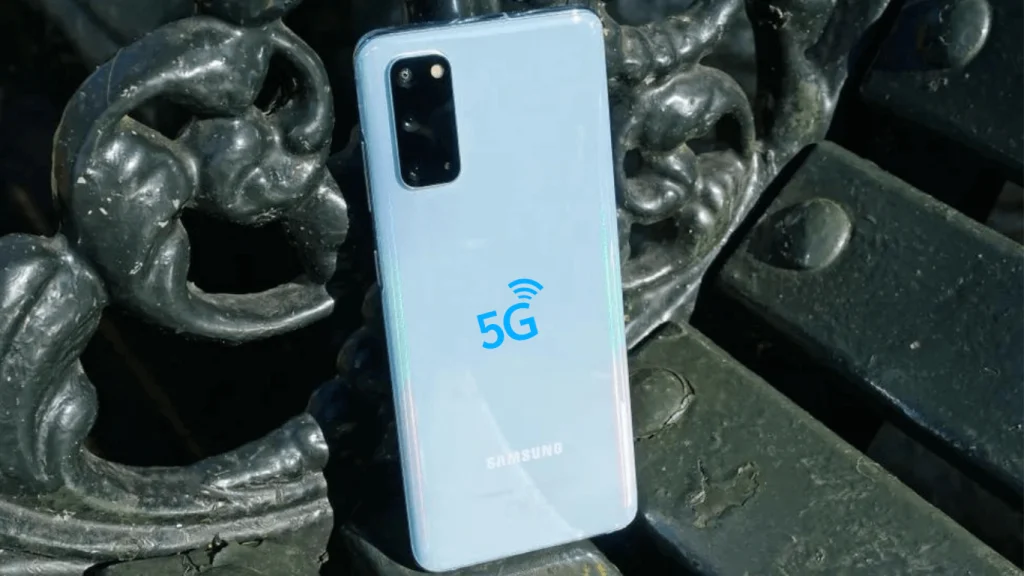
In the US, most carriers offer support for the following 5G phones:
- Samsung Galaxy S20 series
- Samsung Galaxy S10 5G
- Samsung Note 10 Plus 5G
- LG V50 ThinQ 5G
- OnePlus 7 Pro 5G (exclusive to Sprint)
- OnePlus 7T Pro 5G McLaren Edition (available on T-Mobile)
- Motorola’s 5G Moto Mod, compatible with phones like the Moto Z4, Moto Z3, and Moto Z2 Force (exclusive to Verizon)
- Verizon and AT&T also provide 5G mobile hotspots, which offer faster speeds to existing 4G LTE phones.
In the UK, you have access to a variety of 5G phones, including:
- Samsung Galaxy S20 5G
- Samsung Galaxy S20 Plus 5G
- Samsung Galaxy S20 Ultra 5G
- Samsung Galaxy S10 5G
- Oppo Reno 5G
- OnePlus 7 Pro 5G
- Xiaomi Mi Mix 3 5G
- Huawei Mate 20 X 5G
- LG V50 ThinQ 5G
- Samsung Galaxy Note 10 Plus 5G
- OnePlus 7 Pro 5G
- Samsung Galaxy Fold 5G
In Australia, eight 5G smartphones are currently available:
- Samsung Galaxy S20 5G / S20 Plus 5G / S20 Ultra 5G
- Oppo Reno 5G
- Xiaomi Mi Mix 3 5G
- Samsung Galaxy Note 10 Plus 5G
- Samsung Galaxy S10 5G
- LG V50 ThinQ 5G
Additional 5G handsets have been announced, such as the Huawei P40, Huawei P40 Pro, Sony Xperia 1 II, Nokia 8.3 5G, and Xiaomi Mi 10 range.
5G Speed
The speed of 5G networks varies depending on several factors, including location, country, carrier, and the devices in use. On the whole, 5G offers significantly faster internet speeds compared to 4G. In the US, testing of the first 5G networks has revealed mixed results. While some mmWave networks, particularly Verizon’s, consistently provide speeds exceeding 1Gbps as promised, their coverage is limited.
Sprint’s mid-band 2.5GHz 5G service covers a broader area and offers speeds in the 200Mbps range, which, although less impressive than mmWave, still surpasses typical 4G LTE speeds. In the UK, EE’s network reached a peak of 550Mbps in tests but experienced spotty coverage, resulting in average speeds ranging from 200Mbps to 400Mbps. Expect a similar mix of speeds on the UK’s other 5G networks and in Australia as well.
What Does 5G Mean for You?
The advent of 5G brings several benefits, including:
- Faster download and upload speeds
- Smoother streaming of online content
- Higher-quality voice and video calls
- More reliable mobile connections
- Support for a greater number of connected IoT devices
- Expansion of advanced technologies, such as self-driving cars and smart cities
Is 5G Safe?
Yes, 5G technology is considered safe. Despite concerns voiced by some anti-5G campaigners, especially regarding radiation, scientific research has shown no evidence of health risks associated with 5G.
The International Commission on Non-Ionizing Radiation Protection (ICNIRP), which assesses the health risks of radio broadcasts, has declared 5G entirely safe as long as its new guidelines are followed. These guidelines have been developed after seven years of thorough review, scientific workshops, and extensive public consultation.
ICNIRP stated that even its previous guidelines from 1998 would have been sufficient for 5G. Additionally, electromagnetic field (EMF) emissions from 5G were found to be a fraction of the highest safe level in tests conducted by Ofcom, the UK’s communications regulator.
Concerns linking 5G to COVID-19 are baseless conspiracy theories and have been widely debunked. Mobile UK, a trade association representing the UK’s major mobile networks, emphasized that there is no scientific evidence linking 5G to the virus and that such claims are harmful and unfounded.
Conclusion:
5G is a revolutionary technology that promises faster speeds, more reliable connections, and a host of new possibilities. It has been extensively researched and deemed safe for public use, offering numerous advantages in the realms of communication and technology.

![InstapPro vs. Aero Insta: Unveiling the Instagram Battle[2024] 5 InstapPro vs. Aero Insta: Unveiling the Instagram Battle[2024]](https://instaapkpro.com/wp-content/uploads/2023/06/Untitled-design-6-1-1-768x432.webp)
